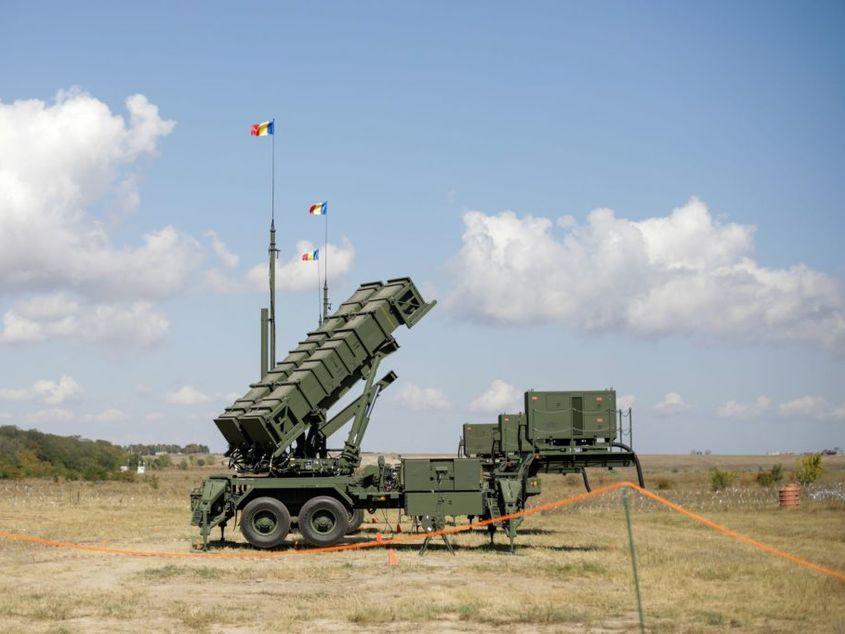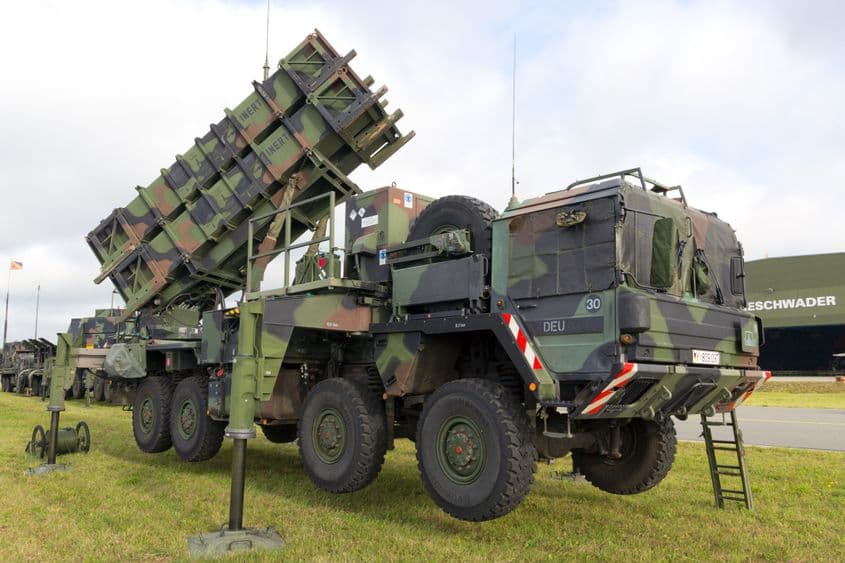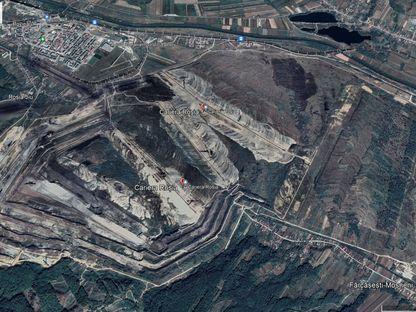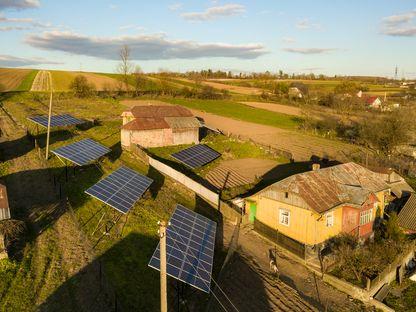Rachetele Patriot asigură apărarea împotriva atacurilor aeriene cu rachete sau avioane. Foto: Cateyeperspective, Dreamstime.com

Rachetele Patriot asigură apărarea împotriva atacurilor aeriene cu rachete sau avioane. Foto: Cateyeperspective, Dreamstime.com
13/11/2024
A Patriot for Ukraine: How Romania Reluctantly Delivered a High-Performance Defense System. The Challenges of Traveling from Point A in a NATO Country to Point B in a War Zone
After two and a half years of strategic silence, with the mantra that has become state policy—"We help Ukraine, but we don’t reveal how much or how, because it’s a secret"—Romania is finally joining the ranks of major military donors to Ukraine, albeit with a little push from the US.
The donation of an entire next-generation Patriot battery is a significant military aid move. It's like winning a gold medal at the Olympics: one victory instantly propels you into the exclusive ranks above those with only silver and bronze.
In Romania’s case, though, it's hard to measure the "loss." The army was supposed to have seven such systems but has only managed to acquire four so far, and only two are actually operational—meaning they’re fully set up with cables, monitors, radars, and personnel at the ready.
Perspective
If we apply the "1 in 7" principle, it doesn’t seem like such a disaster: Ukraine is currently defending itself with 5-6 Patriot batteries against Russian missile attacks, in addition to the dozens of other long- and medium-range anti-aircraft systems (both Soviet/Russian and Western) still in use by Ukrainian forces.
However, if we consider the "1 in 4" scenario—meaning we’re only looking at the Patriot batteries we have in Romania right now—it’s a different story. We’re left with a significant gap in our long-range air defense. How does a "25% reduction in anti-aircraft capability" over just a few days sound?
With four batteries protecting four directions, giving one away leaves us with three. What do we sacrifice? The south (Bucharest, Fetești air base)? The north/northeast (Moldova, Dobrogea, Mihail Kogălniceanu base)? The west (Câmpia Turzii)? Or the southwest (Deveselu)?
The flip side of the argument—supporting the donation to Ukraine—raises an important question: What was the Patriot system actually purchased for? Wasn’t it meant to counter the very "Russian threats" that have been a central part of the Defence Strategy for years? By sending it to Ukraine, Romania has an opportunity to use the system for its original purpose: shooting down Russian missiles.
How difficult is it, really, to transfer an entire Patriot battery to Ukraine?
And which one of the four will we give up? Should we part with one that’s already operational, or one that’s not? What's the difference? And just how hard—or easy—is it to move all the components of such a battery? PressOne spoke with Hari Bucur-Marcu, a defense policy expert and former member of the Romanian Army General Staff, to explore these questions.
Mulți ne citesc, puțini ne susțin. Fără ajutorul tău, nu putem continua să scriem astfel de articole. Cu doar 5 euro pe lună ne poți ajuta mai mult decât crezi și poți face diferența chiar acum!
"The main challenge for Romania is transporting the battery to the Ukrainian border. Once it’s there, the responsibility for moving it to the front line falls entirely on the Ukrainian side," the military expert explained to PressOne.
Transporting a non-operational Patriot system is easier. "If we give away one that's still in the warehouse and hasn’t been assembled yet, the Romanians simply hand it over as it is. Then, it's up to the Ukrainians to assemble it and transport it to where they need it," added Hari Bucur-Marcu.
"Patriot systems are mobile and can be transported on wheels or platforms, meaning their logistics are built into the system. When disassembled, they are designed to be moved from one place to another, always with security in mind: ensuring they’re not visible to satellites or ground spies, for example. These factors are carefully considered every time the system is moved across borders."
Additionally, "If the system is already assembled and the Ukrainians have crews capable of operating it, they can move it wherever they need," the Romanian expert explains.
Coal Mining Expansion Leads to Deforestation: Over 470 Hectares of Forest Cut Down in Gorj, Romania
Over the past six years, more than 470 hectares of national forest land have been allocated by the government, without compensation, to the Oltenia Energy Complex (CEO) for the expansion or opening of new coal mines.
The not-so-green Romania. The state delays settlements for photovoltaic panels by 2 years
PressOne reviews the main dysfunctions in the production, consumption and distribution of energy from renewable sources, as revealed by discussions with consumers and data provided by official sources at the request of our editorial office.
"You can move it today, and no one would know. You just cover it with a tarp, and that’s it. That’s the advantage: the systems are highly mobile. Once they have trained crews to operate them, they can be relocated quickly, covering distances of several hundred kilometers. If the Ukrainians come to take it from us, what they do with it and where they take it is up to them."
"If we deliver it, there will be a drop-off site that’s heavily protected, so the Russians won’t know it’s there or that it’s being assembled—if it needs to be assembled."
Transporting the battery by air is also an option, but it’s more logistically complex: "You’d need several planes to transport it, because it’s large. It would require multiple flights."
Un newsletter pentru cititori curioși și inteligenți.
Sunt curios
What a Patriot "system" is actually made of
When people think of a Patriot "system" or "battery," they often picture the familiar image from military parades: olive or beige containers on a trailer, towed by a truck.
However, according to the document from the U.S. Defense and Security Cooperation Agency (DSCA), a full system (or battery) includes far more than just the visible components. It consists of an AN/MPQ-65 radar set, an AN/MSQ-132 'engagement and control' station (which is the "nerve center" of the entire battery), a main antenna (linking the radar to the control station), launch vehicles, the launchers (containers), anti-aircraft missiles, a power plant, test and training equipment, generators, spare parts, and more.
The Romanian Patriot donated to Ukraine is the "Configuration 3+" model, the most advanced version of the Patriot defense system. It includes high-performance radar systems and advanced PAC-3 type airborne interceptor missiles, which are also capable of intercepting ballistic missiles.
A brief chronology of romania’s Patriot donation to Ukraine: from hesitation to emergency legislation
The odyssey of Romania's donation of these modern anti-aircraft systems to Ukraine began on 7 May 2024, when Klaus Iohannis was received at the White House by US President Joe Biden, at a time when the Romanian head of state was hinting that he would seek the post of NATO secretary-general. Mr Iohannis was summoned to Washington to be presented with an award, but left with the information that "was open" to cede a Patriot battery to Ukraine.
- Just over a week ago, Romanian Defence Minister Angel Tîlvăr hinted that the Patriot was "indispensable" and that "nobody said we have to give it away".
- But the anti-aircraft system became expendable a month later, on 20 June, after a CSAT meeting decided to send a Patriot to Ukraine.
"The Ministry of National Defence has presented to the Supreme Council of National Defence a detailed analysis on the operational status of the four PATRIOT systems, the progress of the programme to equip the other three systems, their operational importance at national and allied level, as well as the impact of a possible transfer of one system," according to the Cotroceni press release.
- On the very same day information emerged about a mysterious negative Ministry of Defence report which allegedly opposed the transfer of the anti-aircraft system to Ukraine. MapN officials have so far refused to clarify the matter.
- Another month has passed and no news from Romania. On 22 August, Kiev's representatives began to tackle the subject subtly.
- 30 August, Kiev ditched the subtle approach and directly asked us not to forget the promised Patriot system.
- On 2 September, the bill left the Romanian government and went straight to Parliament, which resumed its ordinary autumn session. A few hours later the bill was adopted in the Senate.
- A day later, the surrender of the Patriot surface-to-air Patriot battery to Ukraine was adopted also in the Chamber of Deputies.
Debated under urgent procedure, the law had only 2 days to be challenged at the Constitutional Court. Nobody did, which is why on 5 September it was promulgated by decree by Klaus Iohannis.
The law also authorizes the government "to take the necessary steps to reconstitute the ground-based air defense capability for the essential equipment program 'High-High Range Ground-to-Air Missile System (HSAM)'." This includes awarding the U.S. Government the Letter of Offer and Acceptance (LOA) for government contracts under the Foreign Military Sales (FMS) Program to procure one (1) Patriot 3+ configuration ground-to-air missile system. The procurement covers major equipment, transportation means, materials, parts, maintenance equipment, an initial logistics support package, training services, and cryptographic and special regime equipment.
At the same time, the Ministry of National Defence is authorized to allocate the necessary funds for fees and commissions related to the "reconstitution of the ground-based air defense capability."
The law regarding the donation of the Patriot system to Ukraine was published in the State Gazette on September 5, the same day it was promulgated. According to the law, the Patriot anti-aircraft system "shall be subject to acts of donation to third parties, under the terms of the law, by Government decision."
This text is part of a series of articles on TEFI, a cross-border editorial project developed by some of the most powerful editorial offices in Central and Eastern Europe: Gazeta Wyborcza (Poland), Magyar Jeti / 444 (Hungary), SME (Slovakia), Bellingcat (Netherlands), PressOne (Romania), united in a consortium financed by European funds and aiming to promote national and regional security issues.

Avem nevoie de ajutorul tău!
Mulți ne citesc, puțini ne susțin. Asta e realitatea. Dar jurnalismul independent și de serviciu public nu se face cu aer, nici cu încurajări, și mai ales nici cu bani de la partide, politicieni sau industriile care creează dependență. Se face, în primul rând, cu bani de la cititori, adică de cei care sunt informați corect, cu mari eforturi, de puținii jurnaliști corecți care au mai rămas în România.
De aceea, este vital pentru noi să fim susținuți de cititorii noștri.
Dacă ne susții cu o sumă mică pe lună sau prin redirecționarea a 3.5% din impozitul tău pe venit, noi vom putea să-ți oferim în continuare jurnalism independent, onest, care merge în profunzime, să ne continuăm lupta contra corupției, plagiatelor, dezinformării, poluării, să facem reportaje imersive despre România reală și să scriem despre oamenii care o transformă în bine. Să dăm zgomotul la o parte și să-ți arătăm ce merită cu adevărat știut din ce se întâmplă în jur.
Ne poți ajuta chiar acum. Orice sumă contează, dar faptul că devii și rămâi abonat PressOne face toată diferența. Poți folosi direct caseta de mai jos sau accesa pagina Susține pentru alte modalități în care ne poți sprijini.
Vrei să ne ajuți? Orice sumă contează.
Share this




